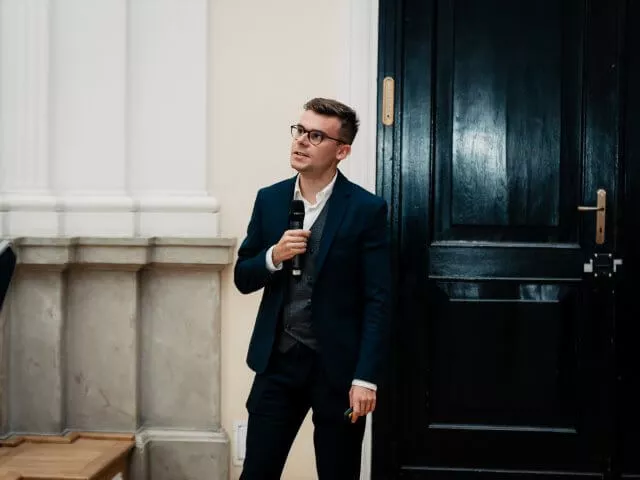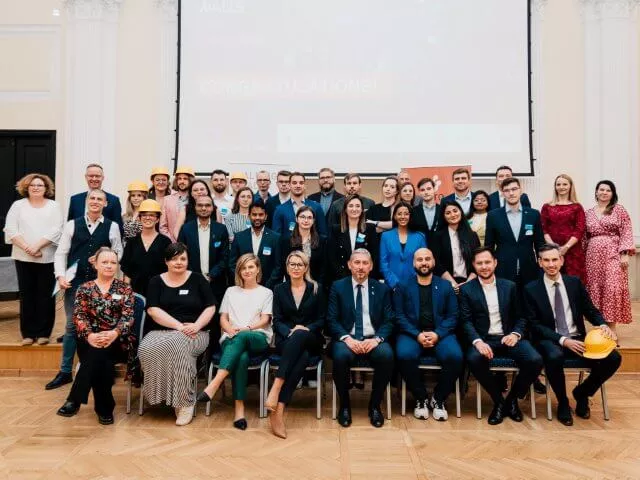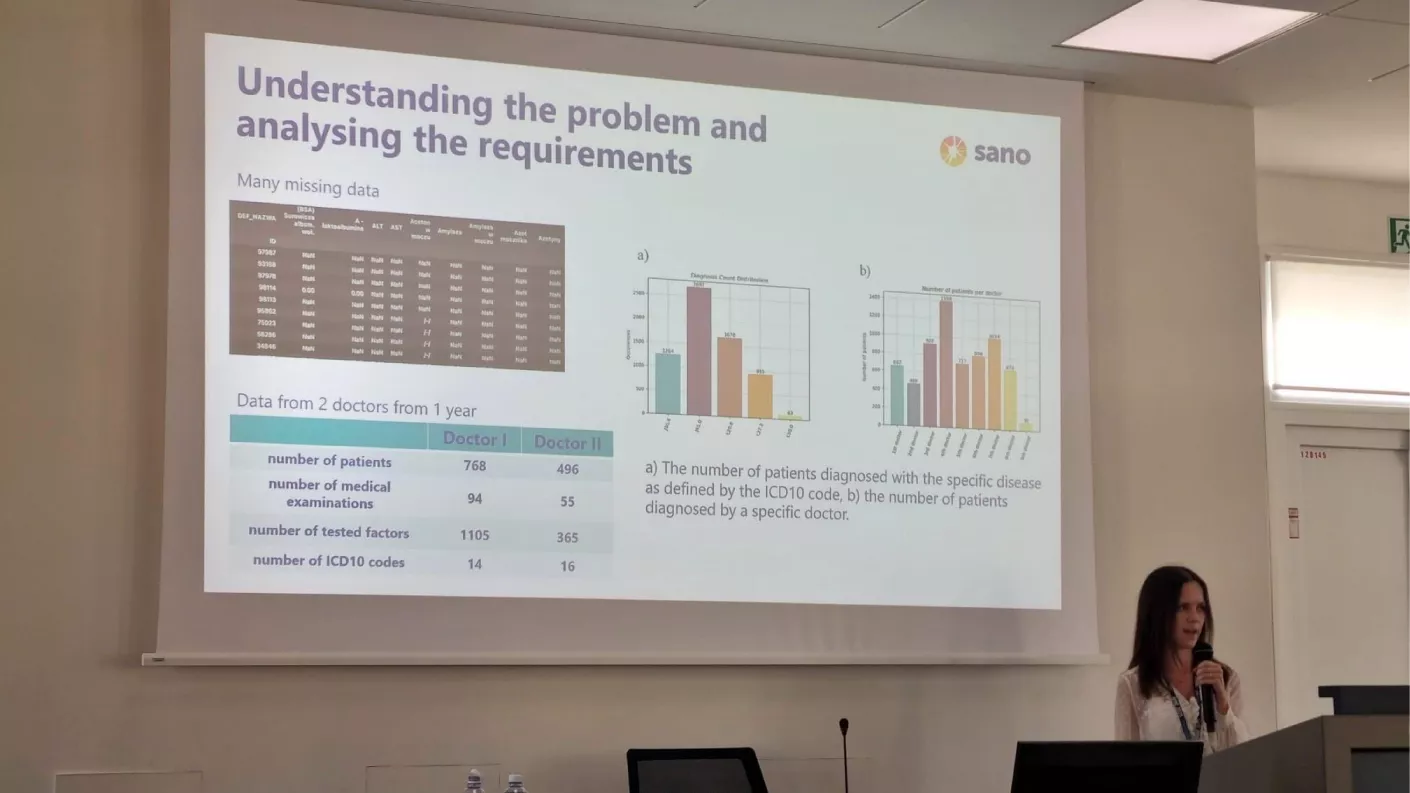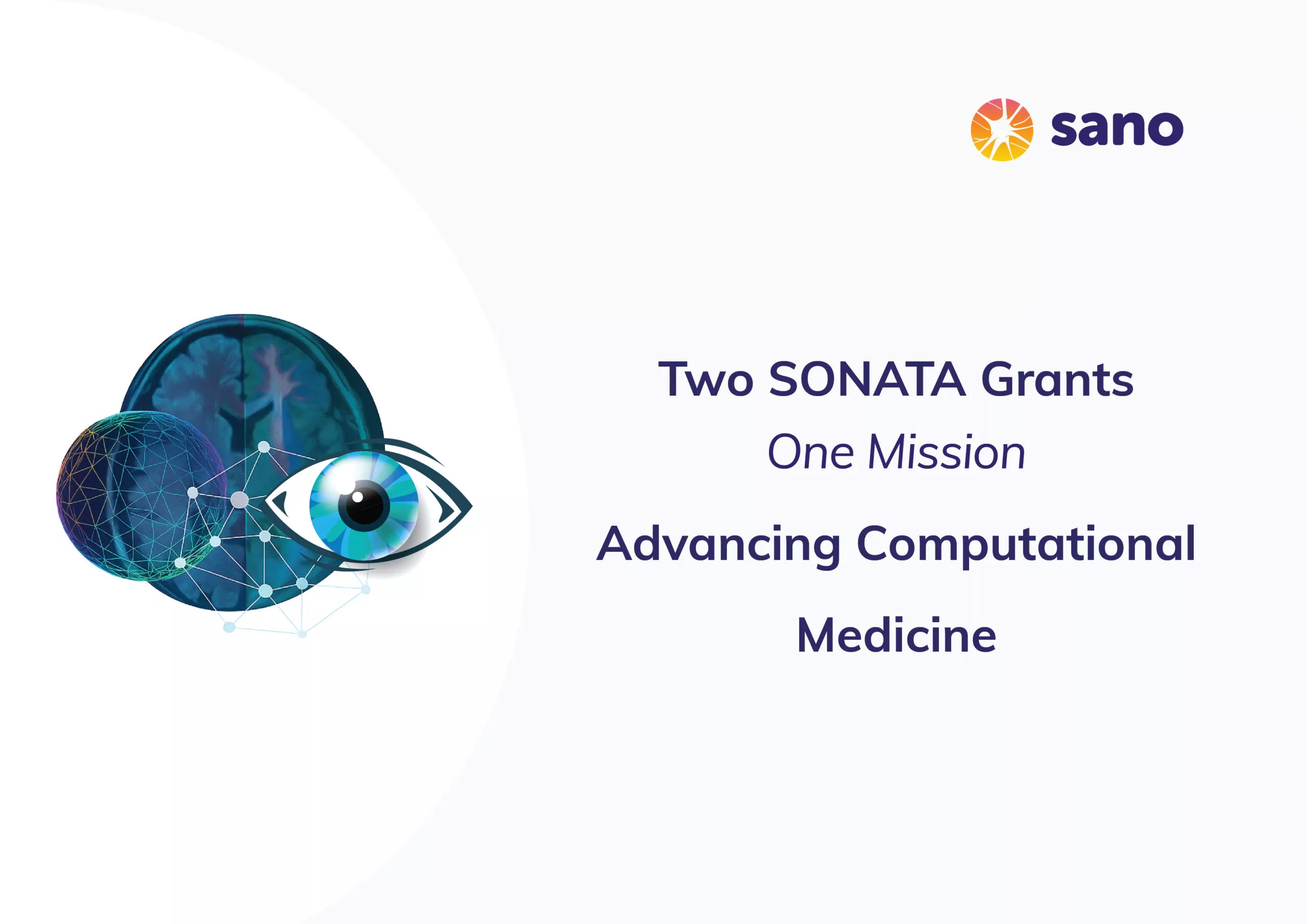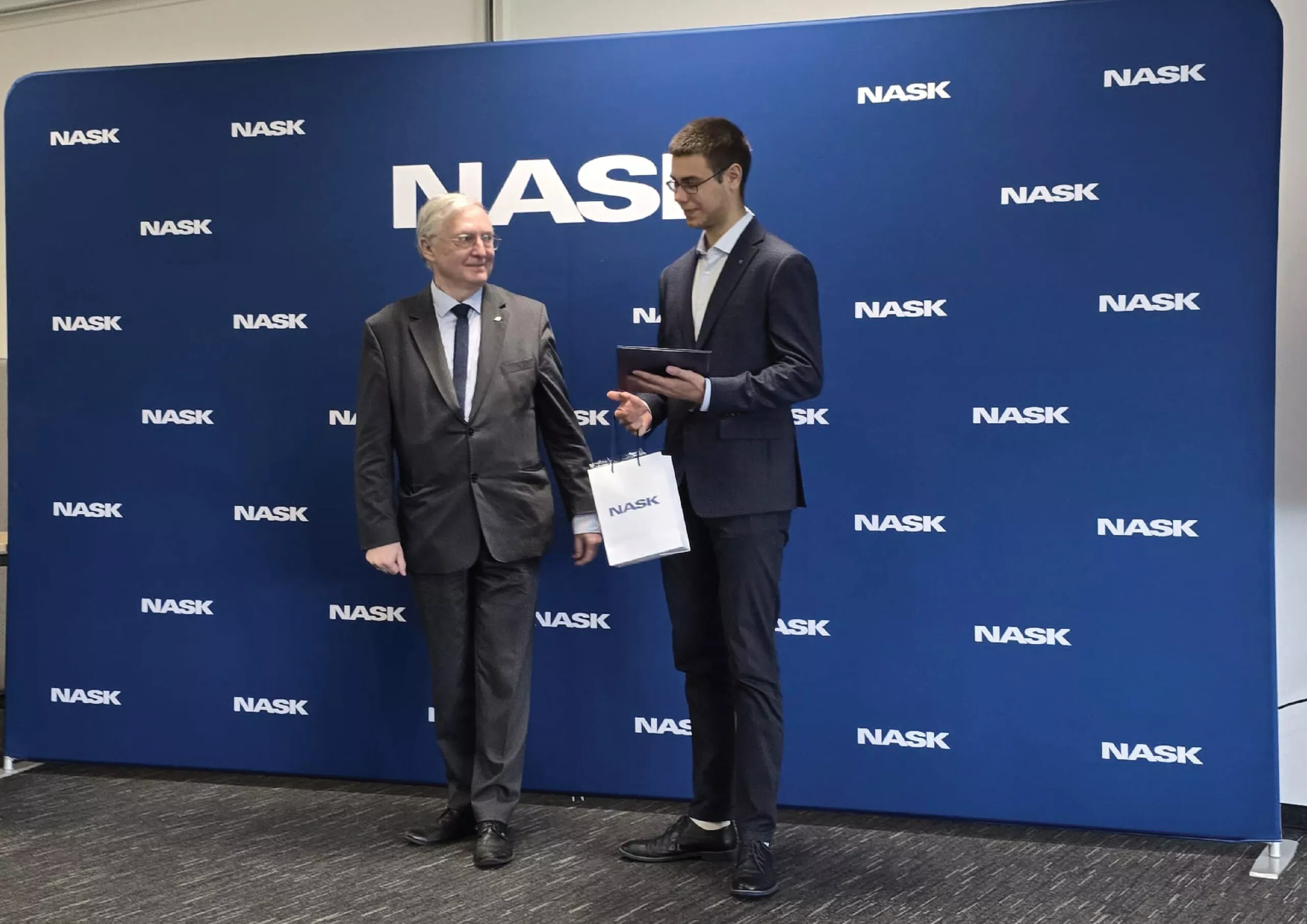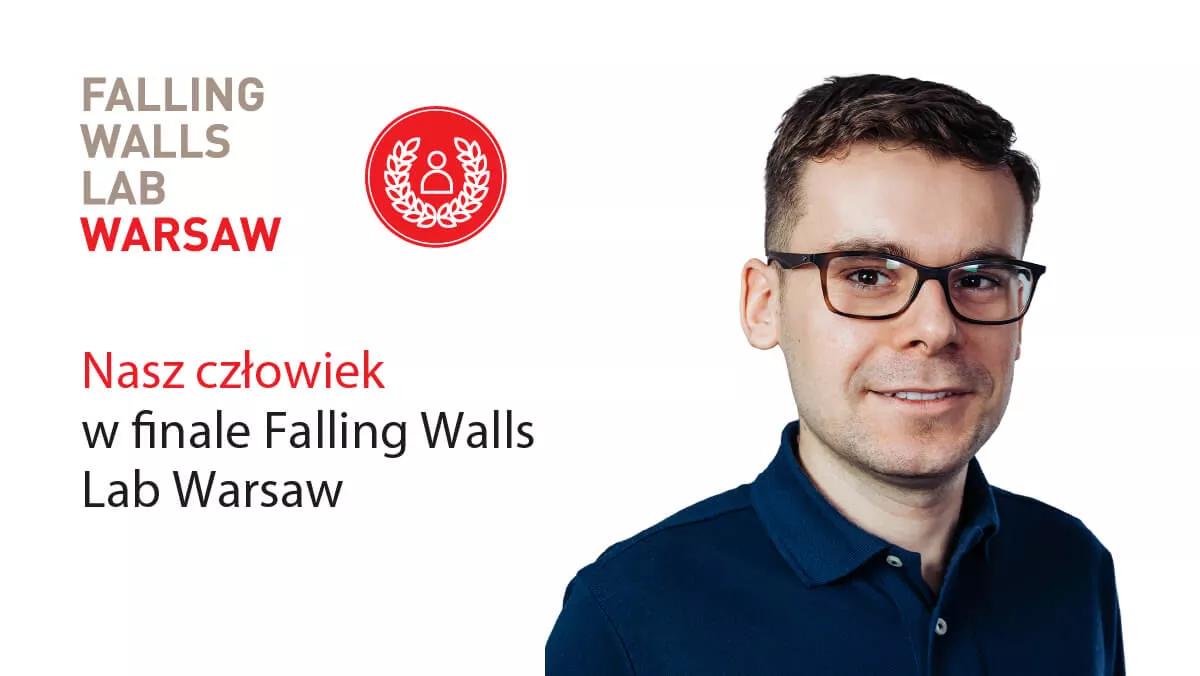
Marcin Wierzbinski is a finalist of Falling Walls Lab Warsaw
20 academics presented their ideas on how to fix the world around us. Each had just three minutes for their pitch. Among those finalists was Marcin Wierzbinski, a scientific programmer on the Sano Science team.
Falling Walls Lab is one of the world’s largest networks connecting ambitious and forward-thinking people from all over the world, from academia, NGOs and business. Its common link is the search for answers to the question of which walls still need to fall in order to initiate positive change – social, economic or technological.
Participants have 3 minutes to tell about their idea to break down an existing wall – in the technology industry, economy, society or science.
This year’s Falling Walls Lab attracted a record number of interested participants. In less than three months, 64 people entered the competition, diagnosing significant problems in areas such as science, technology or society. Thus, the Warsaw competition attracted one of the largest numbers of applications of any edition of this undertaking in the world. Young scientists in the main building of the Warsaw University of Technology were listened to by an audience of nearly 200 people.
An important element of the competition is not only to see the problem to be solved and develop a concept for its solution, but also to properly present this knowledge. Thanks to such ventures, academics learn to talk about their solutions in a way that will be understood by a wide range of listeners.
– We often hear in the public debate that theory is slipping away from practice, and business complains about the inadequacy of research problems to the surrounding reality. At Sano Science, we have emphasized from the very beginning how important it is for us to have a dialogue with the beneficiaries of our scientific solutions. Computational medicine is a combination of medicine and information sciences that offers hope for solving one of the challenges of the modern world: accurate diagnosis and effective treatment of an aging population. That’s why we are happy that one of our scientists tried his hand at the Falling Walls Lab and became a finalist for the event! This is a very valuable experience,” says Dr. Anna Maria Trawinska.
Marcin Wierzbinski gave a presentation on “Breaking the Wall of machine learning in the fight against cancer“.
An important element of the competition is not only to see the problem to be solved and develop a concept for its solution, but also to properly present this knowledge. Thanks to such ventures, academics learn to talk about their solutions in a way that will be understood by a wide range of listeners.
– We often hear in the public debate that theory is slipping away from practice, and business complains about the inadequacy of research problems to the surrounding reality. At Sano Science, we have emphasized from the very beginning how important it is for us to have a dialogue with the beneficiaries of our scientific solutions. Computational medicine is a combination of medicine and information sciences that offers hope for solving one of the challenges of the modern world: accurate diagnosis and effective treatment of an aging population. That’s why we are happy that one of our scientists tried his hand at the Falling Walls Lab and became a finalist for the event! This is a very valuable experience,” says Dr. Anna Maria Trawinska.
Marcin Wierzbinski gave a presentation on “Breaking the Wall of machine learning in the fight against cancer“.
– Machine learning is a part of computer science that focuses on using algorithms and data to mimic the way humans learn, gradually improving accuracy. Current advances in this field are extremely promising and could serve to solve the problems of the current era. One such problem is predicting information about healthy and cancerous cell types in the tumor microenvironment. Techniques from machine learning can be used to recognize such information. In this presentation, I presented an example of a model that relies on information about tanscriptomic data and infer the distribution of cell types in the tumor microenvironment taking into account their spatial locations,” says Marcin.
Congratulations on your success!


